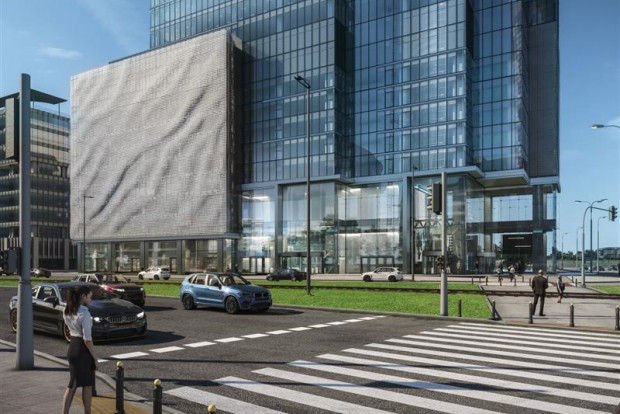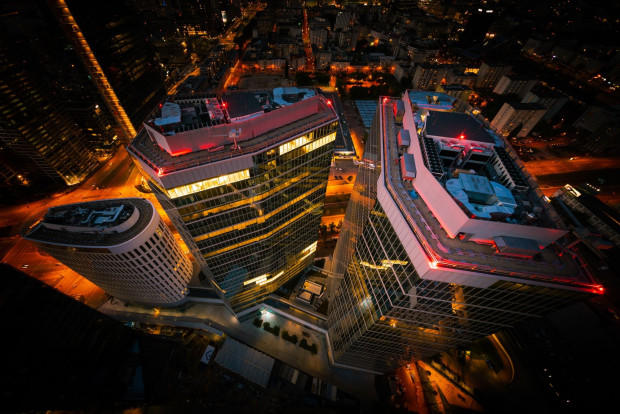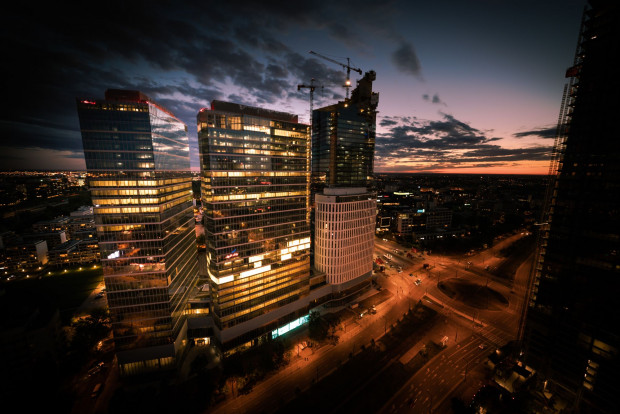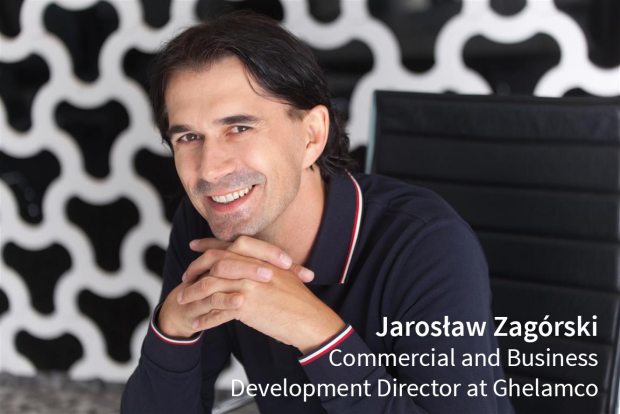Nina Wiater talks to Jarosław Zagórski, Commercial and Business Development Director at Ghelamco, about new technological solutions to be implemented in office buildings, innovative virus protection systems and getting used to the new reality.
Nina Wiater: The Warsaw Unit and The Warsaw HUB are the first office buildings in which unprecedented solutions aimed at ensuring protection against the pandemic will be implemented. What preparation was conducted for these solutions? Were they developed by the team onsite or did you use external subcontractors?
Jarosław Zagórski: It was conducted, of course, by teamwork that involved both people from technical departments responsible for innovation and those responsible for the business. Additionally, external advisors from the Faculty of Building Installations, Hydro technology and Environmental Engineering of the Warsaw University of Technology and other institutions were consulted on the entire process. The process was multithreaded, but its origins were completely different and did not stem from Covid-19. The Warsaw HUB and Warsaw Unit were positioned from the very beginning as highly technological objects. For over two and a half years we have been working on the digitalization of The Warsaw HUB through the implementation of additional solutions that would make it easier for tenants to use the building. Nevertheless, the entire process has been accelerated due to Covid-19. Our main motivator was to increase the comfort for people working in or visiting the building. With this in mind, we created an internal cell that deals with innovations. Together with people from this department, we held meetings with start-ups, during which we collected the most interesting ideas. Then, during the research and development stage, we started to test selected systems. All of these solutions were integrated with each other and tested in a laboratory located in the building formerly known as Bellona in Warsaw. The Warsaw HUB will be a fully contact-free office building just as the Warsaw Unit will be as well as other projects which are planned. So, we are fully prepared for further technological development.
NW: How will the virus protection system work? Which areas of the building will be covered?
JZ: The importance of staying safe in office buildings increased dramatically during the outbreak of the Covid-19 pandemic. Therefore, we have used the technologies we have been working on over the last few years, including a completely contact-free entrance to the office. Additional solutions included UV-C lamps, which we will install in the Warsaw Unit's air-conditioning systems, disinfecting the air that is sucked in on a regular basis. Their mode of operation will be set according to demand - they can work all the time or at selected time intervals. Similar UV lamps will be installed in lifts located in The Warsaw HUB and Warsaw Unit. They will be coupled with sensors and will work only when there is no one in the elevator. Disinfection of the elevators even during the normal flu season will greatly increase health & safety standards. In addition to lamps, we will also use all standard air filters, which are effective in improving the quality of air. All these protection systems will be controlled by the BMS building management system.
NW: In case of an outbreak, buildings will switch into a "pandemic mode". What does this mean exactly?
JZ: In both The Warsaw HUB and the Warsaw Unit we will introduce a “pandemic button”. The building’s manager will be able to stop air circulation in the building with just one button. Then the air will be sucked in from outside and displace the air that was previously in the building’s systems. Paradoxically, this can make conditions in the office building safer than anywhere else.
NW: There will also be a mobile application for the building’s tenants. What functions will it provide to prevent the spread of the pandemic? Will it also be available to guests?
JZ: The application itself is part of the operating system which will facilitate work management and control of the building. Employees of The Warsaw HUB and Warsaw Unit will be able to access the application, which will facilitate movement around the building. Employees will not require access cards because they will be able to enter the area or call the elevator by phone. Our phones will become an access card. In addition to convenience, users will be able to utilize the building without touching it. The application can also be used by guests - they will receive an electronic invitation to open a gate, call the elevator, and reach a specific floor. In addition, the application will also provide all users with information about what is going on in the building, what do restaurants and cafes have on their menus, as well as information about technical or maintenance works. In addition, the application will be integrated with the city’s system, so we can check tram and bus timetables for routes near the building. Of course, we must not forget that the application will contain all information about whether the building is currently operating in “pandemic mode”.
NW: How will the system check if someone is infected, and what happens if one of the employees is found to be infected?
JZ: The system itself, of course, will not check if anyone is infected. But it can trace the path we take inside the building. If we can identify the person who is carrying the virus, we can inform others remaining in the building that they have had contact with such a person. Then these people can go into quarantine or be tested. Of course, all data is fully anonymized, and will be aggregated and analyzed in the cloud using AI (artificial intelligence). But this is only a fraction of the possibilities offered by the implementation of the operating system in the building. We will also be able to say exactly how much energy will be consumed by one employee. This means that companies will be able to analyze energy consumption much more accurately. It will be a good tool for cost optimization.
NW: All these solutions sound impressive and will certainly add value to buildings and their users.
JZ: I think we will create added value both for the users of the building and for the people who manage it on a daily basis. The operating system and data analysis in the cloud will allow us to create a “digital building twin”. The functioning of the building will be analyzed on an ongoing basis, which will allow us to detect faults much more rapidly. We will be able to anticipate or detect a failure and rectify the issue more easily. Sensors will be installed in the buildings to create a digital image of the building that is subject to constant analysis. Such unique solutions will allow us to build better and better projects in the future. This is a very innovative concept that has never been seen before.
NW: Do you think that even after the development of a vaccine for Covid-19, these solutions planned for The Warsaw HUB and Warsaw Unit will become the market standard in case of other epidemiological threats? Will other developers follow this lead?
JZ: We don’t know. We are not sure if other pandemics of this type may or may not appear in the future, so it is worth investing in preventive measures in any case. Intelligent buildings should operate on many levels, with safety as a top priority.
NW: How do the construction costs of a Covid-proof building differ from more standard investments?
JZ: The cost of UV lamps for the Warsaw UNIT alone totals about one million PLN.
NW: Will the pandemic affect the revision of Ghelamco's plans to build high-rise buildings? Will you decide to develop smaller projects?
JZ: I think the pandemic will finally end and we will get back to normal. Even if there are more epidemics in the future, we will learn to live with them. We can take the example of Asian countries that have already faced several epidemics in the past, and people still live relatively normal lives there. Our habits and day-to-day customs are stronger than us. I do not foresee a major revolution in this field or in the revision of Ghelamco’s plans.
NW: Thank you very much for the interview.
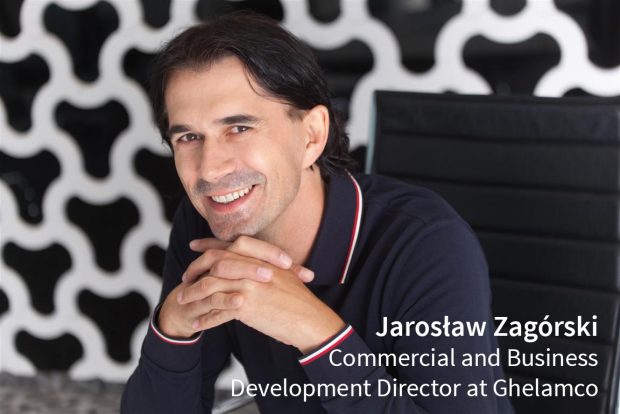
1.JPG)
